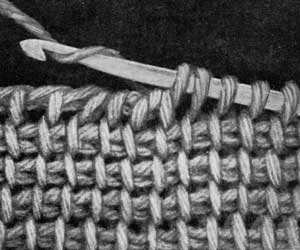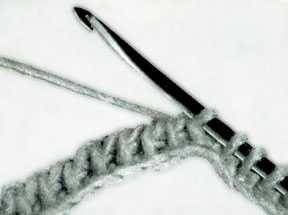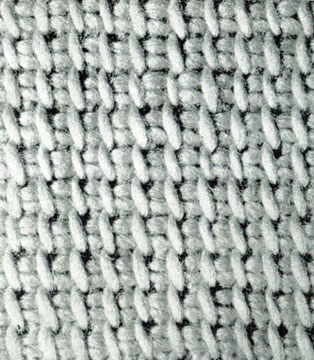Newly Added Crochet Patterns
Afghan Stitch | Tunisian Crochet
What is Tunisian Crochet?
You’ve undoubtedly heard of crocheting. However, you may not be familiar with the term Tunisian Crochet. As yarn art has developed over the centuries, the terminology has changed and new approaches have been created.
A Mix Between Knitting and Crochet?
Many people describe Tunisian crochet as a mixture of knitting and crochet. Tunisian crochet, also called Afghan crochet, uses one long crochet hook that has a stopper at the end. The crochet hook actually resembles a long knitting needle. It’s long because it has to hold a large number of stitches.
Like knitting and crochet, you start your project with a row of foundation stitches. However, unlike traditional crochet, where when your row is complete you turn the work over and move onto the next row, Tunisian crochet rows are a two step process. You also never turn your work over. You face the same side of your project the entire time.
The first row in Tunisian knitting is called the forward and the second part of that row is called the return. It’s much like casting on and binding off in knitting. You then repeat this process until you’ve completed your project. You can also work Tunisian crochet in the round.
Tunisian Crochet Stitches
There are many different types of Tunisian crochet stitches. The basic stitch resembles the knit stitch. The most basic Tunisian stitch is called the Afghan stitch, which is also often called the:
- Idiot Stitch
- Fool’s Stitch
- Tricot stitch
- Railway stitch
Tunisian Crochet Projects
While traditional crochet is quite elastic, the Tunisian crochet stitch is less elastic and more rigid. It also has a tendency to curl. It makes great blankets, or Afghans. It also makes wonderful pillows and scarves. However, it’s generally not recommended for baby items or items that need to be soft and pliable. Tunisian crochet is a speedy process that takes much less time than knitting and it’s even faster than traditional crochet. You can sit down on your couch and knit a blanket in a weekend.
If you’re looking to expand your crochet skills or you want to start with a stitch that’s fast and efficient, consider learning Tunisian crochet. It’s easy to learn. There are print and video tutorials available online. You can also take a class on Tunisian crochet or purchase a book. Once you master Tunisian crochet you can find a variety of projects to practice your new skills on.

How to work afghan stitch:
Step 1 - With an afghan hook, work a ch the required length.
Step 2 - Working in the horizontal strand at back of ch, draw up a loop in 2nd ch from hook and in each remaining ch, retaining loops on hook. There will be the same number of loops on hook as original number of ch.
Step 3 - To complete row, work off loops in following manner: y o hook, draw through first loop on hook, * y o hook, draw through next 2 loops on hook; repeat from * until 1 loop remains on hook.
Step 4 - Counting the loop on hook as the first loop of the row, * insert hook under vertical bar of next st, y o hook, draw up a loop retaining it on hook; repeat from * to within 1 st of end, insert hook under both vertical bars of last st, y o hook, draw up a loop, retaining it on hook. There will be the same number of loops on hook as in Step 2.
Repeat Step 3.
Steps 3 and 4 make 1 row.
Repeat Steps 4 and 3 for desired length.
Source: Crochet Primer, Berhard Ulmann Volume 64
This video will show you how to crochet an afghan stitch.
| Click on video to play Part 1 |
|
Part 2 |



The Plain Afghan Stitch
1. Make a ch. foundation and one extra ch. to turn, then proceed to draw a loop through each ch., and leave all loops on the hook. At the end, there should be the same number of loops on the hook, as there were foundation chains.
2. Row 2. Y.O. and through first loop on hook, * Y.O. and through two loops on hook. Repeat from * until there is only one loop on hook.
3. Row 3. Draw a loop through each upright stitch. At the end, there should be as many loops as on Row 1. Repeat Rows 2 and 3 for pattern.
Source: Complete Guide to Modern Knitting and Crocheting










